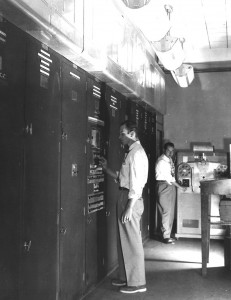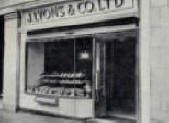 The EDVAC (Electronic Discreete Variable Automatic Computer) was one of the earliest electronic computers and is most noted for using binary and stored programs, radical differences to the previous ENIAC system. Designed by Eckert & Mauchly while at the University of Pennsylvania for the U.S. Army’s Ballistics Research Lab on a $100,000 contract in 1946, it was delivered after some setbacks in 1948 to the cost of $500,000.
The EDVAC (Electronic Discreete Variable Automatic Computer) was one of the earliest electronic computers and is most noted for using binary and stored programs, radical differences to the previous ENIAC system. Designed by Eckert & Mauchly while at the University of Pennsylvania for the U.S. Army’s Ballistics Research Lab on a $100,000 contract in 1946, it was delivered after some setbacks in 1948 to the cost of $500,000.
Like most computers of this era, it was ridiculously large. The EDVAC used 6,000 vacuum tubes and took up 490 ft of floor space. It took a complement of 30 people to run, consumed 56kw of power, and weighed a staggering 17,300 lbs.
The project ultimately wound up causing a rift between Eckert & Mauchly and the University of Pennsylvania over patents. When both men quit, most of the senior engineers went with them to form the legendary Eckert-Mauchly Corporation.
EDVAC was running over 20 hours a day by 1960 and received a lot of upgrades over the years, including floating point arithmetic and magnetic drum memory. It was shut down in 1961 when it was replaced by the BRLESC.




